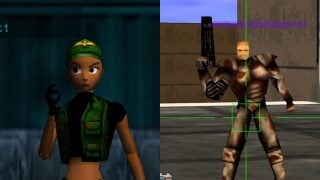Few things are as fun as plowing through a room full of enemies with a giant sword, and RemiLore gives you the chance to do exactly that. Protagonist Remi is transported to the world of Ragnoah, an alternate universe overrun by mechanical monsters, and throughout her journey the only help she has is Lore, the magical book who transported her to Ragnoah in the first place. To make it back to her own universe, Remi is tasked with fighting her way through the mechanical monsters in four different worlds, each themed after one of the four seasons. Throughout her adventure, she meets the likes of Choux, an android girl with a mysterious connection to Lore — and she’s determined to stop Remi from reaching the portal and insists that Lore takes her instead.
While I loved how sassy Remi could get while interacting with Lore, I found Choux, and to a further extent, Lore, to have some pretty shallow dialogue. With that in mind, the story and writing aren’t going to win any awards, but the content isn’t bottom of the barrel stuff either. I still enjoyed RemiLore immensely — there’s something about flying through tons of enemies with increasing ease as I progressed through the game that just resonated with me, whether the dialogue and story are enthralling or not.
Now let’s talk about why that is:
Working with wacky weapons
To fight her way home, Remi can choose from over 200 weapons over six different weapon styles, though when you first start out, only one style is available to use: the single-handed sword. As you progress, you’ll unlock the other styles, one after the first world, and another upon beating the game — after that, each subsequent completion will reward another style until you have all six. The differences between the styles are pronounced enough that each one stands out and has its own merits. Hammers and Two-Handed Swords do massive amounts of damage in exchange for low combo ability and very slow attack speed, while weapons like the gauntlets and the staff trade a high combo capability for lower damage-per-hit. Individual weapons range from the standard fantasy fare; like sharp swords and menacing, spiked hammers, to the absolutely ridiculous, such as a frozen banana on a stick, a balloon hammer, and gloves holding piles of poop.
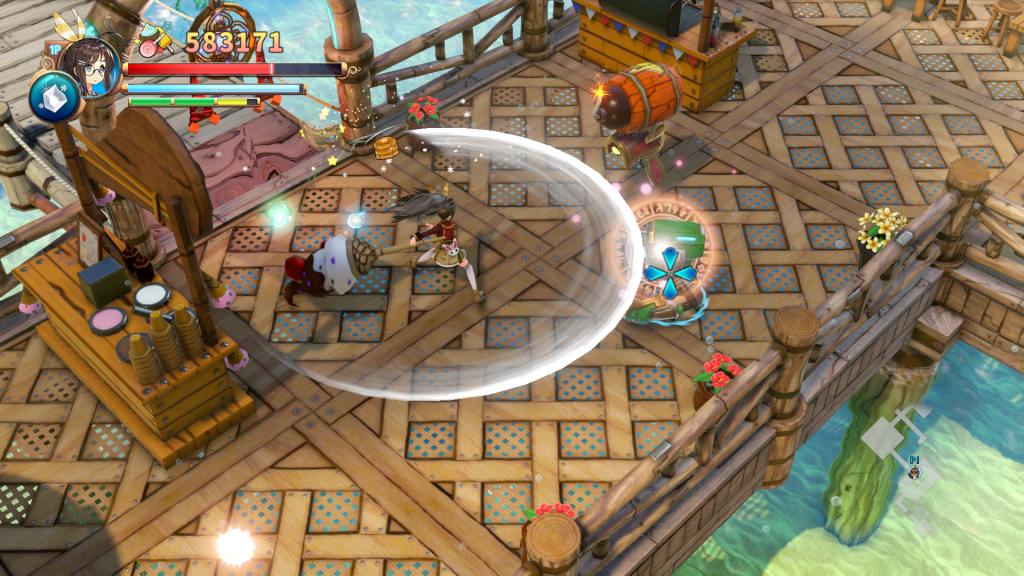
Weapons aren’t the only tool in Remi’s arsenal though. Lore also helps out with a bit of spellcasting, granting abilities like calling down thunder on enemies, slowing down their movements, or freezing them in their tracks, among others. Using spells depletes the MP bar, which can be replenished by picking up the desserts left behind by defeating enemies. Desserts also grant Dessert Points, which can be saved up to upgrade spells or increase the likelihood that you’ll find stronger weapons along your journey.
The combat overall is extremely fun and flows well with every type of weapon, which is aided by an on-screen indicator of which buttons to press next for the combo you want. It’s a combo system that seems like it would make the game too easy or clutter the UI, but I found it more beneficial than anything else — it really increased my understanding of how to handle the combat instead of having me just mash buttons until I found something that worked. In the end, I absolutely adored the combat and I can’t believe this is the first time I’ve experienced a system like the one offered in RemiLore.
A replayable rogue-lite
As a rogue-lite game, RemiLore offers a short campaign overall, which only took me about six hours to complete the first time. If Remi’s health reaches zero, she’ll have to start back at the beginning of the current world, which can be frustrating early on if you make it through all three levels and end up dying on the boss. Luckily, when you’re sent back to the beginning of the world, you get to keep all your upgrades and your current weapon, allowing you to keep getting stronger and increasing your chances of beating the campaign.
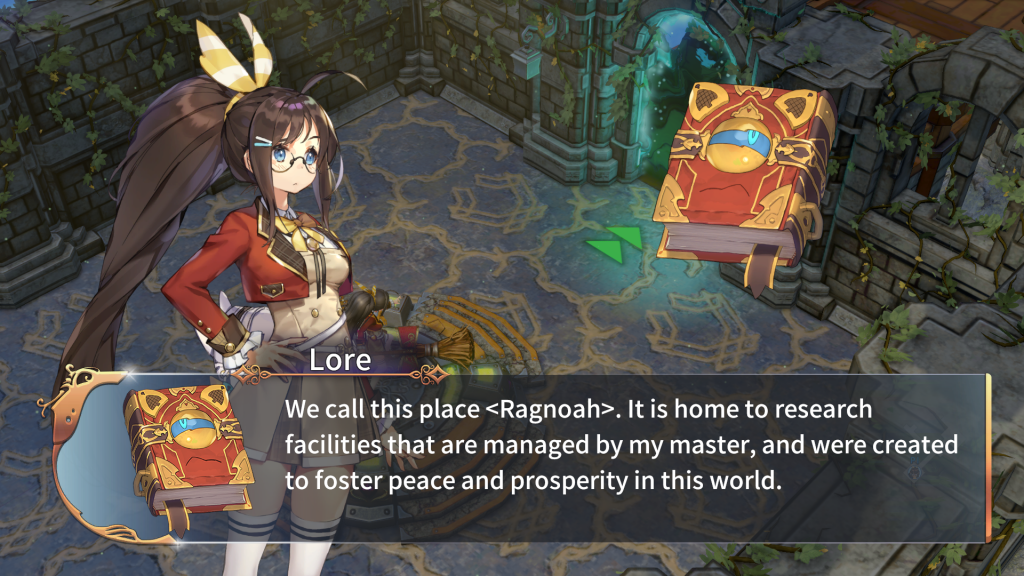
Beating the game for the first time unlocks several new modes to play with, letting you use modifiers, like increasing your attack and movement speed while decreasing your attack power or allowing you to freely choose from any weapon and spell you’ve unlocked. A boss rush mode also unlocks, letting you run through all four of the game’s bosses as fast as you can.
After taking into account the modifiers and accumulating different, stronger weapons, each run through the game tends to go faster and faster. My most recent clear only took about an hour or so, but it was still incredibly enjoyable. Some people might take a look at the short playtimes and lose interest, but I’ve found RemiLore to have an incredible amount of replayability, thanks in part to the procedurally generated levels, but the real draw was unlocking and experimenting with different types of weapons and spells — and again, plowing through rooms full of enemies with giant, outlandish weapons is tons of fun.
Chaotic co-op
Single-player isn’t RemiLore’s only offering; co-op is also available from the get-go. Co-op play allows you to play with a second person backing you up with their own weapon and spell, making the game a bit easier, but also more hectic.
Unfortunately, there are a few problems with frame rate in co-op, and they’re most persistent when there are a lot of enemies, desserts, or general movement on the screen. Combine any or all of those factors on the screen while playing co-op, and there were times that the screen completely froze and struggled to keep up, even while docked. These moments seemed to become more frequent as we got closer to the end of the game, but honestly, the issue didn’t make the game any less enjoyable for me. It’s just jarring to be surrounded by enemies and suddenly have the game stop and start at random, especially when it’s already difficult to keep track of your character in the chaos.
Seasonal scenery
As far as the looks of the four different worlds in RemiLore go, their season based theming is fun, but the meaning behind it isn’t really referenced in any way during the game. Also worth noting; there are definite indications for summer, fall, and winter in worlds two, three, and four respectively; but honestly, you’d be hard-pressed to find any indication that the first world is springtime themed.
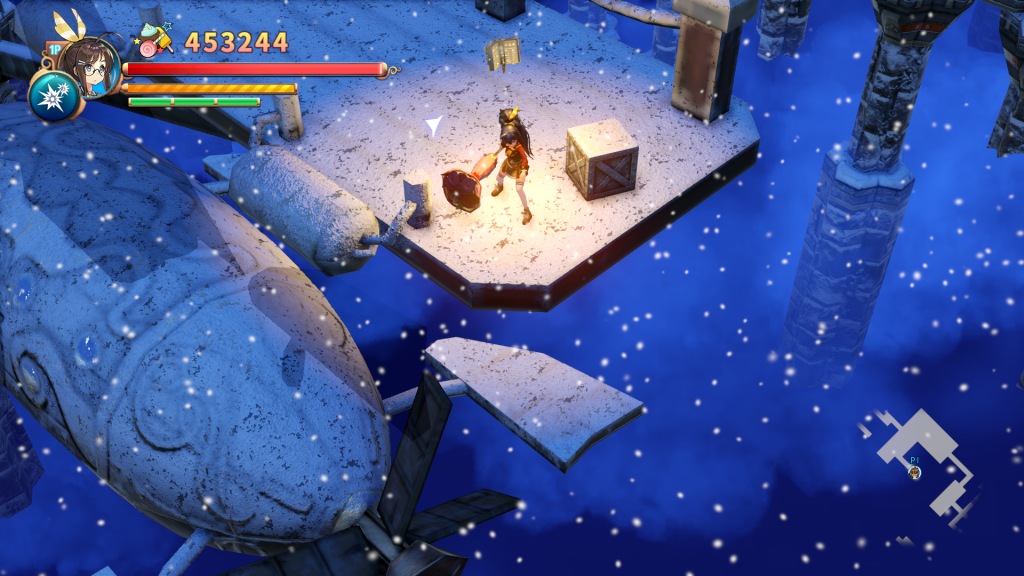
Each world has three levels which take Remi and Lore though the day, evening, and night, offering a nice change of scenery as you progress. Whether docked or in handheld mode, RemiLore looks great on the Switch — the beautiful sunset colors of each world’s second stage are a sight to behold, and the subtly-colored beauty of the softly lit night stages are equally as gorgeous.
Completing certain objectives will unlock various costume changes for Remi and Choux that can be selected when starting a new run or continuing where you left off on a previous run, but there is no way to change your costume during gameplay, which I was disappointed by.
Sound-wise, RemiLore’s music is pretty solid. It isn’t incredible, but it gets the job done. The feel of it isn’t obnoxious enough that you get sick of it after replaying a world a few times, but it also isn’t going to stick around in your head for long after turning the game off. World Two’s music was definitely my favorite, as something about it made me nostalgic — and it matches perfectly with the world’s light and breezy summer theme.
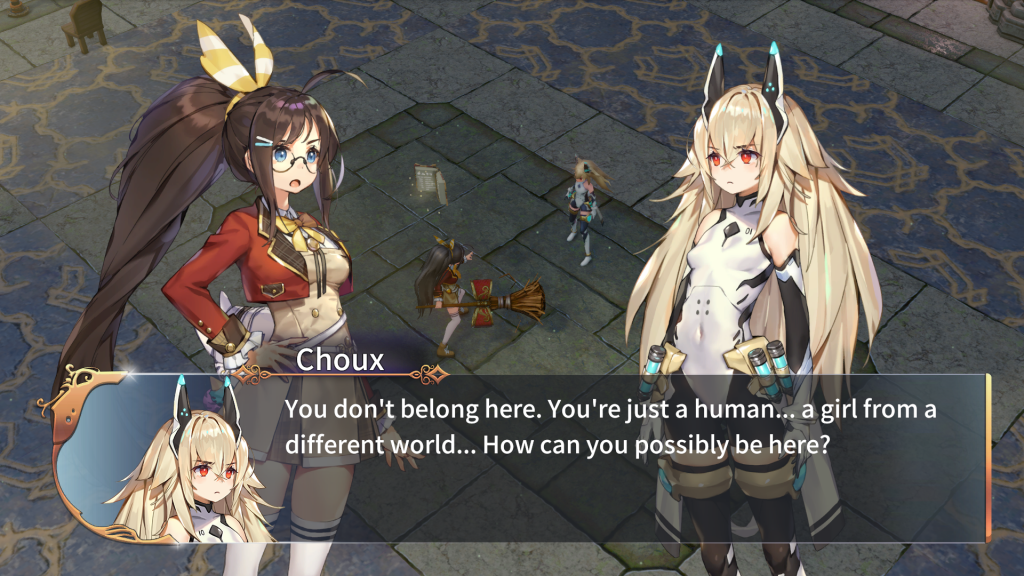
The game is fully voiced, but the only voiceover available is Japanese. Remi and Choux’s voices are adorable and match their designs pretty perfectly, and I really grew to love Remi’s battle cries. Lore’s voice, however, rubbed me the wrong way, so much so that I found myself reading all his dialogue as quickly as I could and skipping the voice line almost every time he spoke. Not being able to understand Japanese still hindered my enjoyment of the voice work, and I ended up turning the voice volume almost all the way down when playing co-op since gameplay was already so hectic.
The finishing blow
When all is said and done, RemiLore is a lighthearted hack-and-slash roguelite that any fan of either genre should look into picking up. The combat system works impeccably with each of the six weapon styles, and with so many weapons to choose from, any player is going to find something they love. The game looks gorgeous in handheld and docked modes on the Switch and the seasonally themed worlds are as satisfying to look at as they are to play through.
Is co-op more your style? Don’t let the frame drops deter you; running through Ragnoah with a buddy is twice the fun, even if you sometimes lose your character in the mess.
Leave a Comment
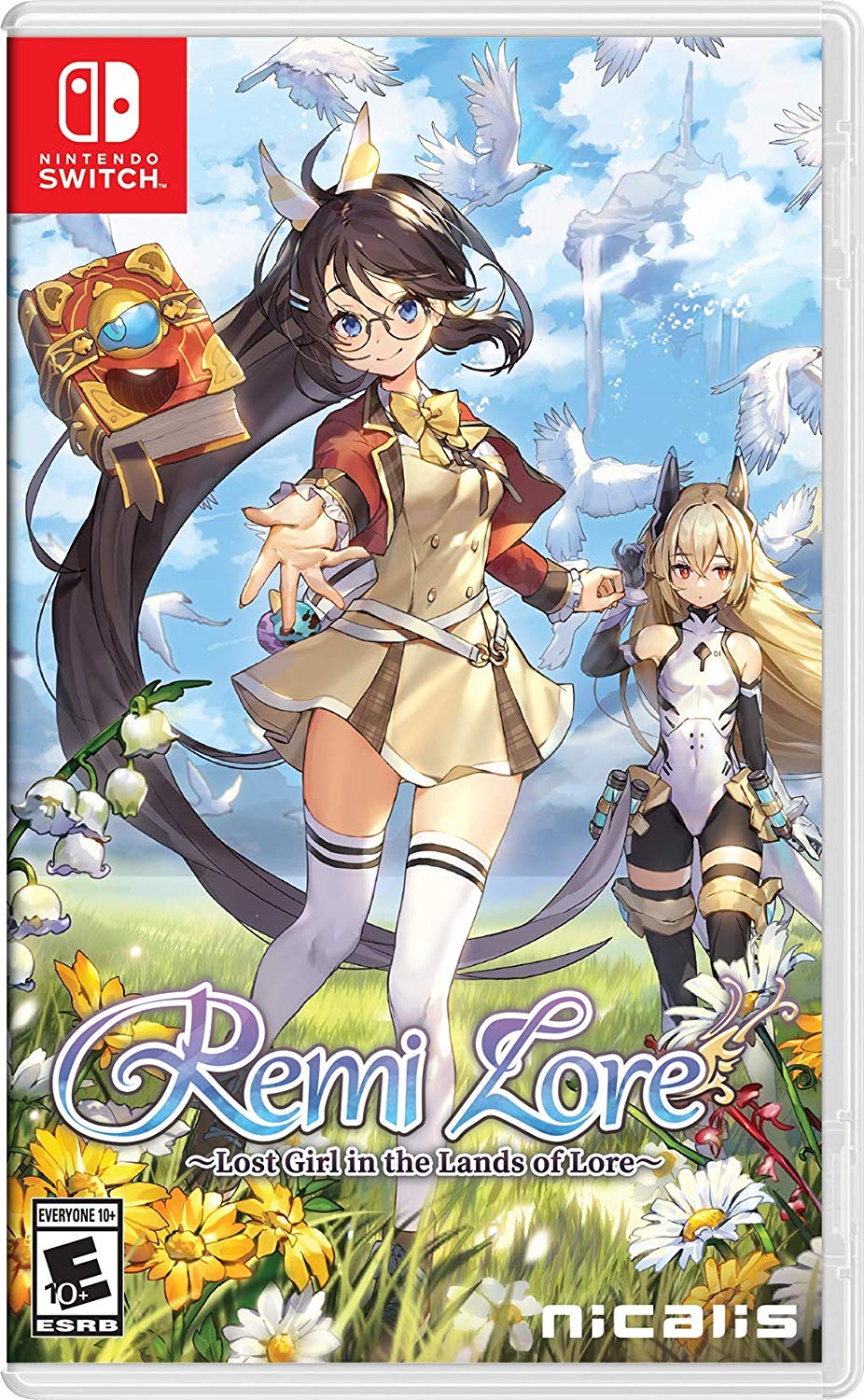
System: Nintendo Switch
Release Date: February 26, 2019
Category: Action, Adventure, Multiplayer
Publisher: Nicalis
Developer: Nicalis


